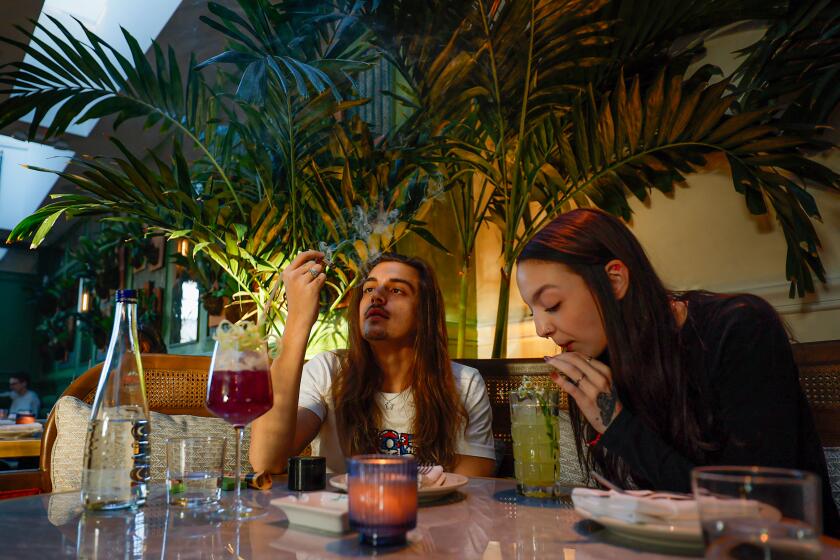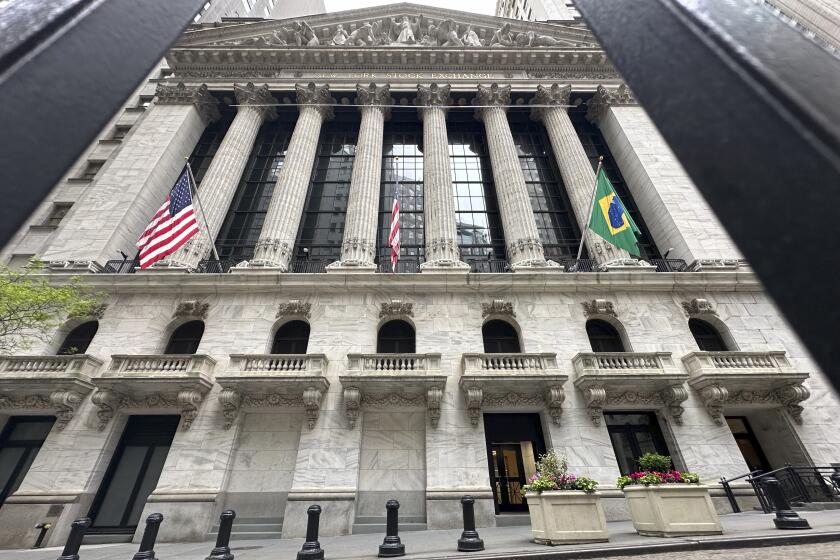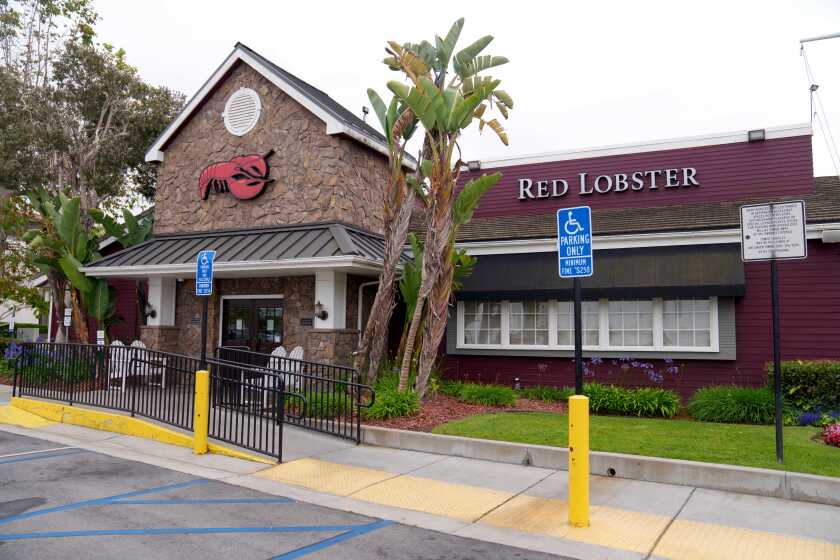Firms Hope Seltzer System Makes Big Splash
The idea came to Rich Hagan with a bang.
It was 1982 and Hagan was the owner of a two-man firm called Golden Gate Bottling Co., which refilled glass-and-metal seltzer bottles.
“I had been filling a glass seltzer bottle when it blew up in my hands,” said Hagan, now 37. “When they explode, they go off like a hand grenade. And I started thinking that there had to be a better way.”
That “better way” seemed simple at the time: design and build an inexpensive, all-plastic, disposable bottle and siphon head to spritz out the carbonated water called seltzer, which has captured , a significant chunk of the adult market for soft drinks.
Five years and hundreds of thousands of dollars later, Hagan’s idea has become a reality, with help from a small Anaheim injection-molding firm--Southern Plastic Mold Inc.
Hagan created the prototype for the plastic siphon head. But it was the engineers and designers at Southern
Plastic who took Hagan’s dream from paper to plastic, by designing a manufacturing system that could injection-mold the difficult plastic called PET into the delicate shapes of a valve with edges as thin as .017 of an inch.
“This took a lot more than just my thoughts,” Hagan said. “A lot of people said this couldn’t be done, and there it sits.”
In June, San Francisco-based McKesson Co. will unveil Alhambra Seltzer--the first seltzer in a crowded market to be sold in the disposable two-liter plastic bottles with screw-off plastic siphon heads, which company officials say will hold in carbonation for the life of the product. Alhambra will be available in Silicon Valley markets alone until early 1988, when it will be introduced in Los Angeles and Orange counties as Sparkletts Seltzer.
Each one of the millions of spritzers McKesson hopes to sell will be made by Southern Plastic. The company is owned by two brothers and a family friend and has operated in Anaheim for 34 years.
With a staff of 140, Southern Plastic performs high-tech custom plastic injection molding in a 50,000-square-foot plant, creating everything from goggles for the Department of Defense to telephone bodies for Rolm Corp and Wang.
But because of Hagan’s six-part valve and siphon head, Southern Plastic officials expect to add 50 new positions to their staff, build a new plant of 12,000 to 15,000 square feet to augment their existing facility and increase gross annual sales to more than $15 million in fiscal 1989 from their fiscal 1987 level of $12 million, said Charles P. Finkbiner, Southern Plastic vice president.
“I would say that this breakthrough in technology . . . is the biggest single item that we’ve worked on at our company,” Finkbiner said.
“We have never been involved in a project of this proportion. We’re talking over the next three years (of) potentially millions of dollars.”
All this, McKesson officials said, because Southern Plastic is the only firm they could find capable of injection-molding the plastic PET (polyethyleneterephthalate) delicately enough to create the spring that forms the heart of Hagan’s valve.
PET must be used, McKesson officials said, because it’s the only moldable plastic that won’t taint the taste of the liquid it holds.
The valve--which is embedded in the neck of every seltzer bottle, waiting to be activated by a siphon head--allows Alhambra to keep fizzing long after Coke and Pepsi have gone flat, said Peter M. Riley, director of engineering and technical services for the McKesson Water Division.
“There’s a need to maintain carbonation within the package,” said Roy D. Burry, a securities analyst with the investment firm of Kidder, Peabody & Co. “So this could be a very major plus for the soft drink industry.”
Burry said the new siphon is part of a larger effort by the soft drink industry to expand consumption by improving packaging. The effort is partly in response to the increase in size of beverage containers over the last decade; while bottles have grown, the ability to keep bubbles in them hasn’t.
“All seltzer is, is carbonated water,” Burry said. “If you lose the carbonation, all you have is lousy water.”
Although McKesson officials said their disposable siphon could become a staple in soft drink packaging, Kate Mahar, associate editor of the trade journal Beverage Industry Magazine, said it is doubtful that consumers will ever buy colas in spritzer bottles.
“You’re looking at a more expensive package,” Mahar said. “Soft drinks is such a competitive market. When you add this cost (of the siphon head) to the basic price, I think that would be a problem. I question whether it would be used on a large scale on things like Pepsi and Coke.”
A two-liter bottle of Alhambra seltzer, with a reusable siphon head attached, will cost the thirsty $2.49. If the siphon head and the seltzer are bought separately, they will cost an estimated 75 cents and $1.99, respectively.
The seltzer will be available in lemon, lime and orange in addition to the unflavored version. By comparison, a two-liter bottle of Coke or Pepsi costs $1.89 to $1.99 at most markets. National brands of seltzer, such as Canada Dry, retail for 79 cents to $1.29 for a one-liter bottle.
Seltzer--in the siphon bottle that endeared it to generations of slapstick-loving fans of the Three Stooges and Marx Brothers--dates to 1830s Europe, said Hagan, who has been collecting antique back-bar siphon bottles since 1970. In the mid-1800s, European immigrants brought the beverage to the United States.
Seltzer drifted out of popularity until health-conscious consumers of the 1980s created a comeback, industry analysts said.
Surveys by Beverage Marketing, a research firm affiliated with Mahar’s magazine, show that in 1984-85 U.S. consumption of seltzer grew 22%--from 55.7 million gallons in 1984 to 67.9 million gallons in 1985. Dollar figures on seltzer sales were not available.
The combined national market for seltzer and club soda, which adds salt, was about $354.4 million at wholesale level in 1985--representing about 23% of the $1.5-billion bottled-water industry, according to the survey.
Hagan said his--and consumers’--seltzer nostalgia was just one factor leading to the evolution of his plastic siphon head. Another, he said, was naivete: “Being relatively naive, I thought that if you could make a plastic bottle, you could make a plastic top.”
That was 1982. Three years, $200,000 and one prototype later, Hagan went to a Northern California venture capital firm, whose members put Hagan in touch with McKesson Co.
And McKesson found Southern Plastic Mold.
The result of this union will be on supermarket shelves in June: an all-PET bottle and siphon head that squirts seltzer 20 feet and puts Harpo Marx to shame.







